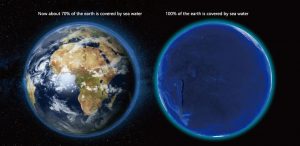
From 1947 to 2019, five Solomon Islands disappeared, and in 2020, two more islands in the Pacific disappeared. This is not a supernatural event, nor is it an unsolved mystery of nature, but the result of sea-level rise.
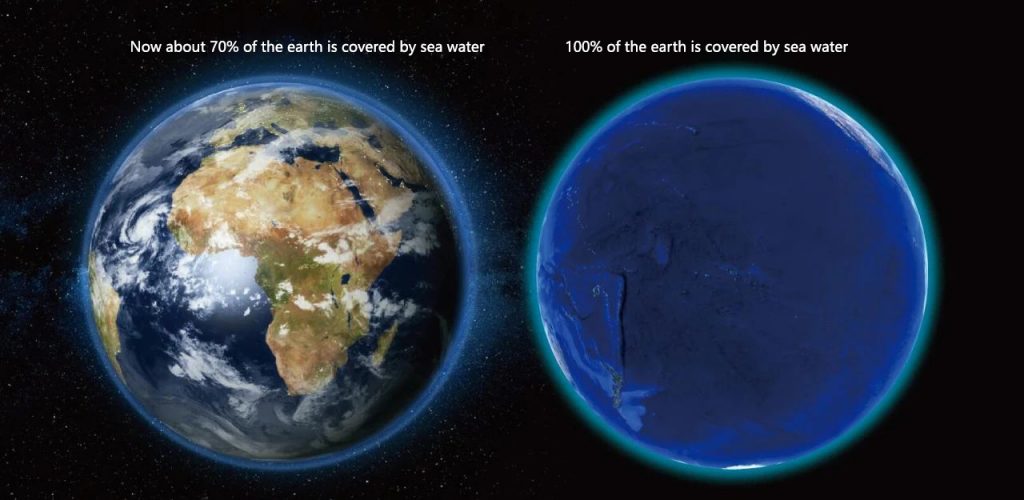
According to the statistics of NASA, the global sea level is rising at a rate of about 3mm a year. This figure seems small, but if mankind does not have an effective way to curb climate change, the ice sheets in the north and south poles may completely melt in the future. At that time, the sea level may rise by 60 or 70 meters, many coastal areas will be submerged, the distribution of sea and land will be re divided, and the survival of many organisms will be threatened… Only the sea level rise of 60 or 70 meters can bring great changes to our world. What will happen if the earth is completely submerged?
The earth used to be a water ball
About 70% of the earth’s surface is now covered by water, but new research shows that the earth may have been a “water ball” 3 billion years ago.
Scientists have found a geological relic 3.2 billion years ago in the Inland Northwest of Australia, which was an ocean 3 billion years ago. Through the study of more than 100 stone samples and comparing the contents of two isotopes oxygen-16 and oxygen-18, it is found that the content of oxygen-18 in seawater 3.2 billion years ago is higher than that now.
Scientists speculate that the earth was a big “water ball” 3 billion years ago. They believe that the low content of oxygen-18 in the ocean today is because the earth’s continent and land soil can absorb this heavier oxygen isotope from water. Three billion years ago, there may have been no continent in the ocean that occupied Australia, so the content of oxygen-18 in marine sediments was so high. However, although it is called “water polo”, it does not mean that the earth is completely covered by sea. There will still be some sporadic islands emerging from the sea. This may be the time when the land area of the earth is the smallest.
In 2015, scientists from the University of Bristol found in another study that the earth’s continent “surfaced” from the sea about 3 billion years ago, which seems to confirm the view that the earth was once a “water ball” from the side.
However, it may be a good thing that there was no continent on the earth 3 billion years ago. Scientists believe that life on the earth originated from the ocean. It was the global ocean 3 billion years ago that provided important conditions for the birth of life. So, what if the earth becomes a “water ball” now?
The great extinction is coming
If the earth’s land is completely submerged, the sea level will rise by at least 8000 meters (at least the altitude of Mount Everest), which will lead to a series of species extinction.
First, almost all species living on land or in fresh water cannot escape extinction. Including humans, most plants, birds, mammals, reptiles, amphibians and insects, all rely on land for survival. Land provides us and other terrestrial species with food and fresh water, habitat and shelter. If all the land is flooded, fresh water and food will become very scarce. The disappearance of plants will reduce oxygen and increase carbon dioxide on the earth, threatening all organisms that need oxygen to survive.
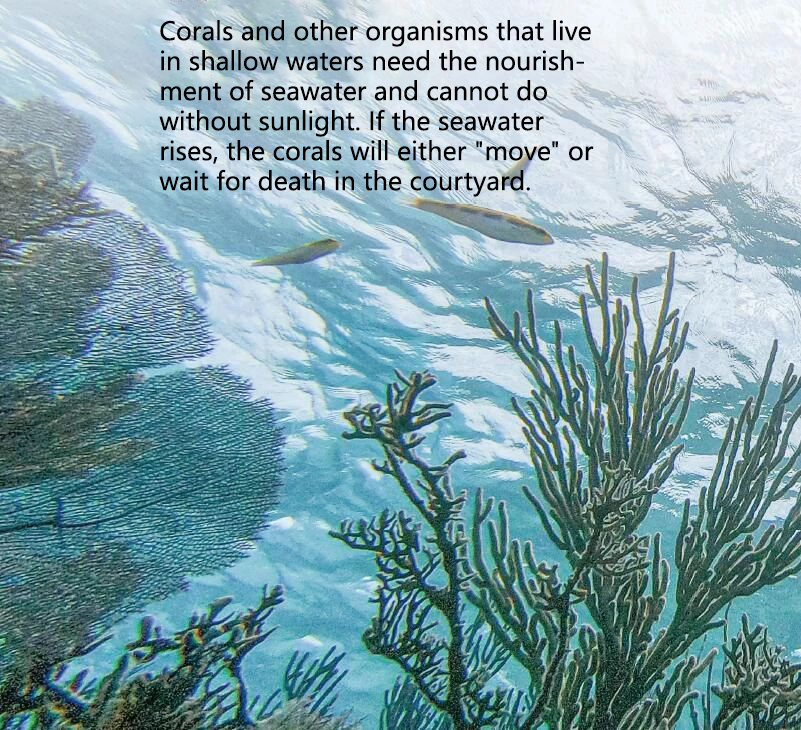
Secondly, creatures living near the coast will also be destroyed. For example, coral reefs, seaweed forests, mangroves, etc. these ecosystems are inseparable from the ocean, but they need a lot of sunlight to maintain their operation. When the sea level rises gradually, they also have to “walk” and move to land and shallow water areas. And they also need to “walk” fast enough to catch up with the rising speed of Shanghai’s water level in order to take root and get enough sunshine. Otherwise, they will also be swallowed by the dark deep sea and eventually go extinct.
Finally, I’m afraid it’s hard for marine life to be alone. In the ocean, different organisms live in different depths of the sea. If the fish living in the deep sea is brought to the shallow sea, it may die because it cannot adapt to the changes of air pressure, water temperature and seawater composition. Similarly, if fish in shallow waters go to the deep sea, they may also die because of changes in their living environment. If the sea level rises by thousands of meters, large-scale vertical migration may occur in the ocean, and some marine organisms may become extinct because they cannot adapt to environmental changes.
Uncertain climate
In addition to habitat destruction, the cause of biological extinction is also climate change. In different latitudes and geographical conditions of the earth, the climate is different. In short, climate involves temperature, light, precipitation, etc. In history, mass extinction events have been accompanied by climate change. For example, the Permian Triassic mass extinction event about 250 million years ago, volcanic eruptions led to global climate change, causing more than 90% of marine life and 70% of land life to disappear from the earth. So what will the earth’s climate be like without land?
Some geologists believe that the distribution of land and sea is an important factor affecting the global climate. For example, with the characteristics of fast heat absorption and slow heat dissipation, land can affect the temperature of surrounding seawater; River water scours and carries a large number of continental minerals to the ocean. The inflow of these minerals not only affects the density and material content of seawater, but also brings nutrition to the ocean; Land can also block the flow of sea water or release it, so that the sea water can bring warmth to cold areas and cool down tropical areas; It can also produce rainfall through wind from land and sea; wait. Without land, these benefits will not exist.
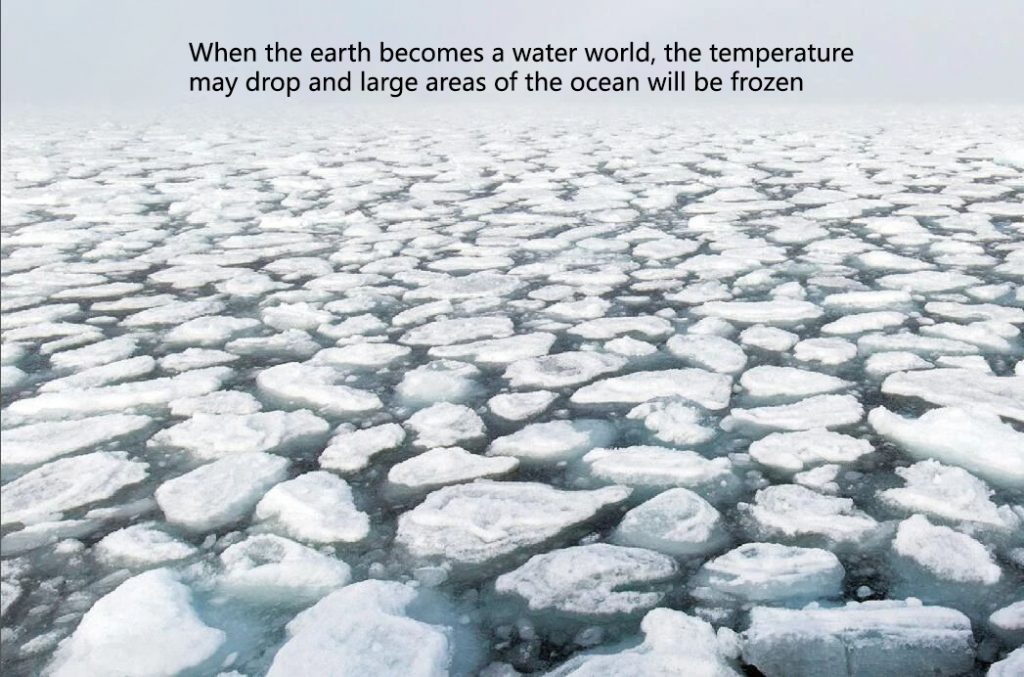
Scientists also believe that the reason why the earth can live for a long time is that there are active geological activities on the earth, which enable the circulation of minerals and gases, especially carbon, between the earth’s atmosphere, ocean and mantle, which maintains the stability of the earth’s climate. In the carbon cycle, the carbon from land is relatively heavy, which comes from volcanic eruption, rock weathering and erosion, as well as the combustion of fossil fuels. The disappearance of land breaks the original carbon cycle system and reduces the carbon involved in the carbon cycle, which may lead to the decline of the earth’s temperature.
Does this mean that after the earth becomes a water ball, it is no longer livable? It may not be that bad. In 2018, a study jointly conducted by the University of Chicago and Pennsylvania State University showed that if a rocky planet is located in the habitable zone, even if its surface is completely covered with water, as long as the planet contains an appropriate amount of carbon, the climate stability on the planet can be maintained only through the circulation of carbon between the atmosphere and the ocean. In other words, if the carbon cycle can maintain normal operation and the content is not too high or too low, the earth will also be a paradise for life, but this life should be aquatic life.
The earth dragged down by water
However, there are many factors affecting the climate, and the rotation speed is also one of them. The speed of rotation determines the amount of light in each place. At the beginning, the rotation speed of the earth was not the same as now. In the Precambrian (about 600 million years before the birth of the earth), the rotation speed was faster than now, only 21 hours a day, mainly because of the pulling effect of the moon on the earth. The rotational speed of an object is also related to its mass distribution. Before the ice sheets at the north and south poles melted, they were fixed at the center of the earth’s rotation axis; After the ice sheet melts, water flows into the oceans all over the world. As the water disperses into the ocean, the rotation speed of the earth will also slow down, which is similar to that of a ballet dancer when she rotates – the dancer rotates with her hands close to her body (mass concentration), faster than when she opens her arms (mass dispersion).
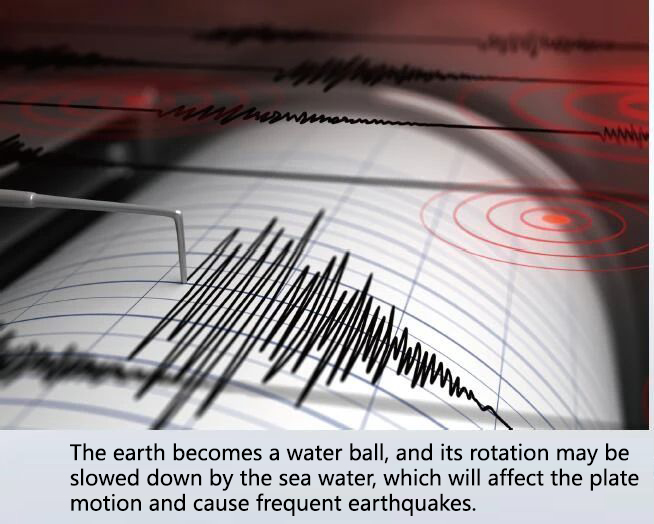
In 2014, scientists from the University of Newcastle in the UK found that the crust of Antarctica is uplifting at a rate of at least 15mm a year. They believe that this is due to the melting of ice and snow in Antarctica, reducing the weight of the land, and the continuous upwelling of thick magma under the surface. This will cause the earth’s rotation to slow down slightly. Scientists speculate that this may also happen in other places covered by thick ice sheets.
So what if the earth’s land is completely covered by sea water and its rotation speed slows down? First, the earth’s Day is getting longer. More importantly, in 2017, American geophysicist Roger birham proposed that the equator will shrink as the earth’s rotation slows down. However, the tectonic plate is not easy to shrink, which means that the edge of the plate will be squeezed, resulting in frequent earthquakes at the plate boundary. If the earthquake intensity is strong enough, the scene of towering waves on the earth may be normal.
Although the land cannot be completely submerged by the sea, we may face great changes brought about by the rise of sea level. Not only the face of the earth will be changed, but also the life on the earth will undergo a major reshuffle. A number of lives will go extinct, and some life will evolve new characteristics to adapt to the new environment… Now, maybe we still have time to “save” the land “Save” the home on which we live.
Comments